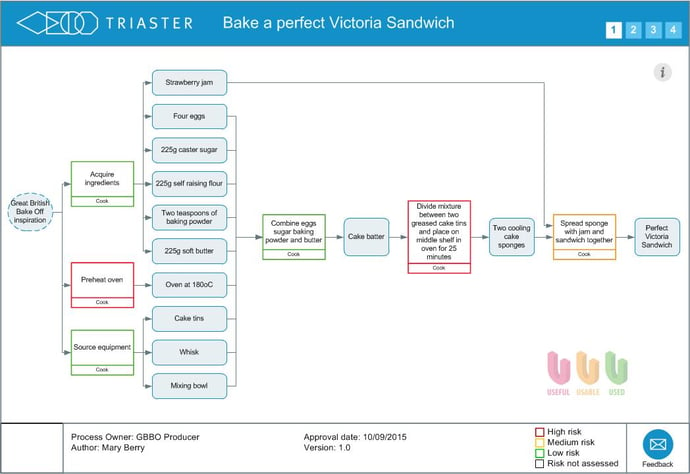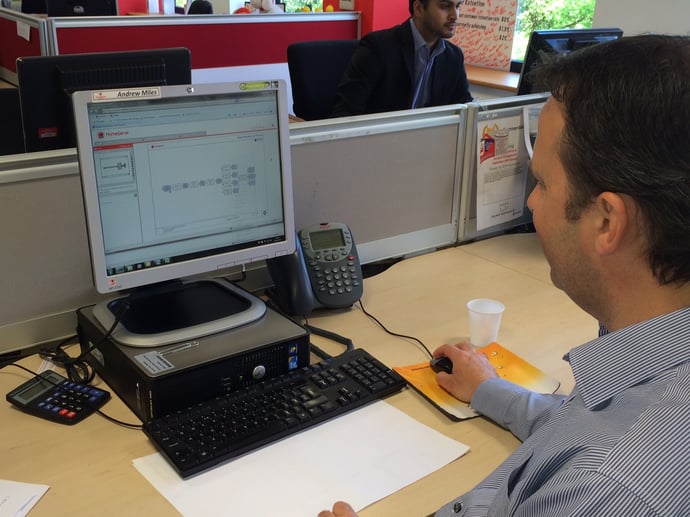Employee commitment and engagement is a massive priority for most organisations - with many trying to solve the problem by finding ways to motivate the employee or looking at the employee directly as the problem. As soon as you get two people performing the same task without a standard way of working and there is room for them to be doing it differently, there will be inconsistent working. This does not mean employee commitment is lacking; it could mean that your way of working is broken or there is no standard way of working (which leads to massive variations in efficiency).
If you've ever sat back in your office chair and wondered how to motivate your employees to work consistently, this article will provide you with some answers that are more about placing inconsistent people in consistent business structures, than challenging employee commitment.
The Problem With Inconsistent Working
The problem with inconsistent working is all a matter of degree. I think that we all like to bring some individuality to our work and no one likes either working as an automaton or being served by one, however the problems arise when too much inconsistency creeps in. Then the following main problems arise:
- Inconsistency of outcome
- Inefficiency
- Lack of control
Inconsistency of Outcome
If people are working in different ways, what they produce will alter. This is frustrating for the customer, and has a very negative effect on trust. This is bad enough if the customer is in a different part of the same organisation – getting, for example, differently reported figures depending on who is collating the report - but if the customer is the ultimate external customer it can be very damaging.
Customers of an organisation expect roughly the same process and the same end result regardless of who they are speaking to and if they don’t get this, they feel really frustrated. I think we have all had the experience of calling up one day and someone saying something, but when you call back the next time, someone else says something different. It’s infuriating and if the end result is different - what you are charged for a call-out visit – you lose all confidence.
Employee Engagement Theory - The Danger of Structural Inefficiency
If two people are doing the same thing, but in different ways, it is unlikely that both of them are doing it equally efficiently. You might put this down to differing employee commitment, but if there is no standard way of working, this may well not be the case. One might just be working more efficiently than the other. So waste is being built in immediately. In addition, if the outputs are variable there will be inefficiency at the handover point – with the internal customer mentioned above having to spend time working out how to deal with a different set of reports each time – and the external customer perhaps complaining.
So, just to repeat this statement; inconsistent outcomes from employees do not necessarily mean employee commitment is lacking.
To take this inefficiency out you not only need people to work consistently, but you also need to be able to identify best practice and have sufficient control over the process to be able to improve it.
Lack of Control
If people are working inconsistently there is very little control over the process. It is therefore very difficult to improve it or change it to either address the problems already discussed, or to address other issues such as risk mitigation.
Increasing employee commitment may mean improving employee consistency - but how do we achieve that?
Change Culture. Change Employee Work Ethic. Document!
If we want people to work consistently we have to document what we want them to do and we have to make it easy for them to find it and follow it.
A recommended way to document what we want people to do, is to process map it.
Document the Process - Process Map Example
Below is a process map example setting out the process for baking a cake. It clearly shows how the various ingredients (inputs) are transformed into a cake (output). The information in this process map example is quite high level (so not patronising) and it is easy to follow and understand. If additional detail is needed (perhaps a written recipe or a video showing the cake being made) this can be linked to from the map.
The output or outcome is clear, as is the process to get there.
With the current way of doing things captured, there is also a mechanism to measure and control the process and most importantly improve it.

Will People Follow the Process?
Yes they will, but not just because they are told they must.
It is really important to involve the people doing the work in capturing the process and agreeing what the best practice approach is to ensure employee commitment. This is the one that should be adopted as the process to be consistently followed and if people have played a part in agreeing it, they are much more likely to follow it.
Also the documented process must be easy to find – on the intranet say – and easy to follow, with quick search and easy navigation. The agreed process will only be followed if doing so is easier than not doing so.

Business Process Management and Employee Commitment
The culture of the organisation also plays a significant part in whether employees are committed to consistently following the documented process. If there is a heroic culture where people are used to ‘blagging it’ or ‘saving the day’ then it is going to be hard to get them to follow the agreed process. A culture of process management is crucial.
How to achieve this is covered in depth in this article:
Problems with Business Process Management (BPM): Getting employees to follow the process
Also, if you are interested in learning more about how to improve your own business processes, feel free to have a read of Triaster's comprehensive guide on continuous improvement.
Related articles:
Problems with Business Process Management (BPM): Getting employees to follow the process
Process Mapping: Who does it and why?
Written by Emma Harris
Emma was Operations Director for Triaster for nearly 20 years, during which time as well as learning and perfecting her BPM and process improvement skills, she honed her inbound marketing expertise. She now runs D2e - Designed to engage - which designs and develops bespoke, engaging, HubSpot CMS websites, that help your entire company to grow and scale. She is delighted to still be delivering Triaster's marketing, whilst also helping other companies turn their websites into their hardest working asset.



